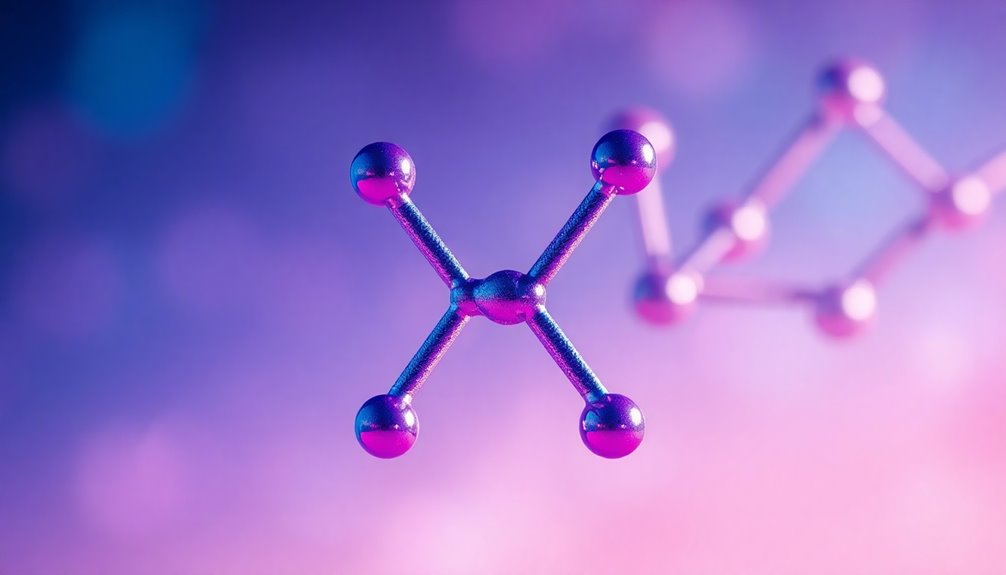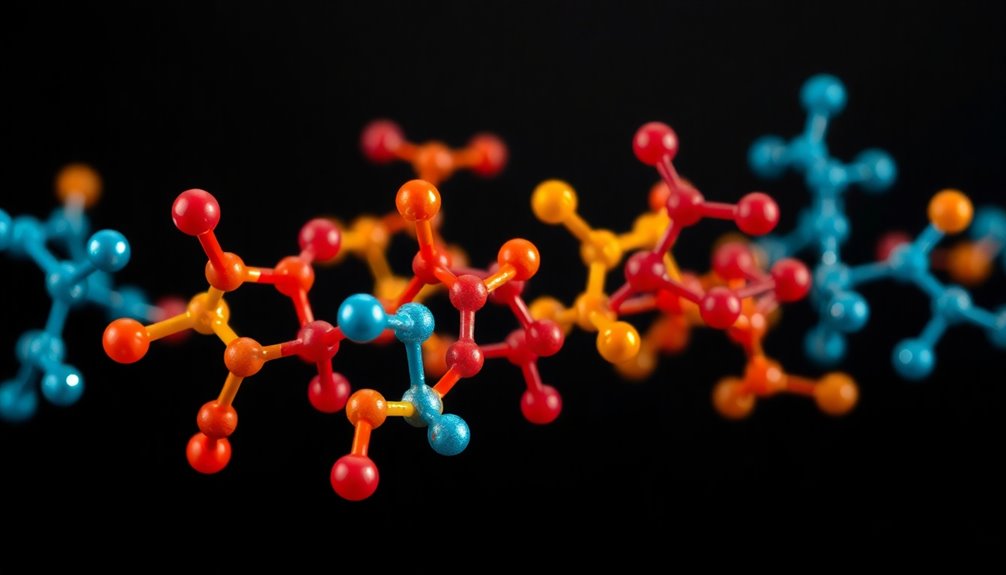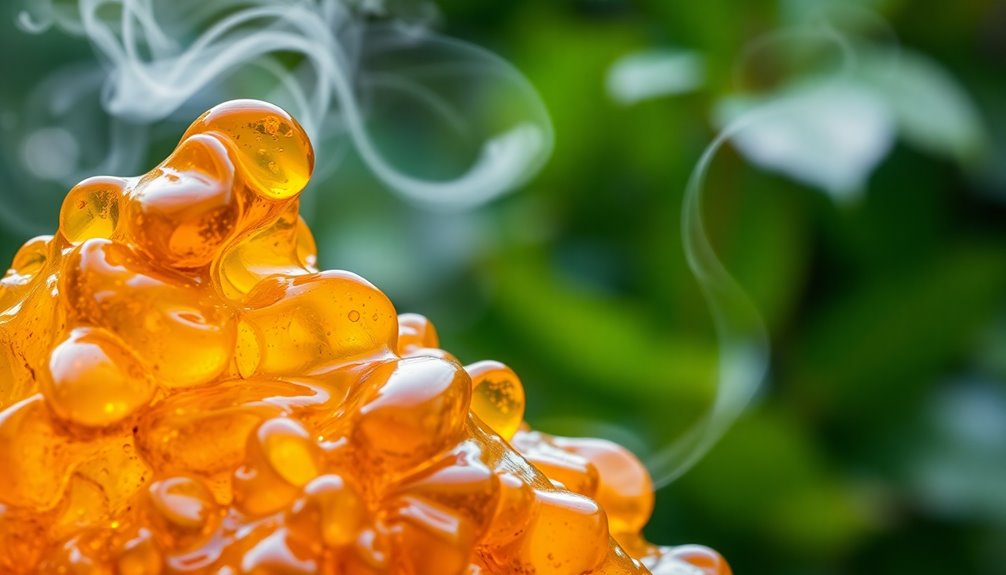The cyclopropenyl anion isn't aromatic; instead, it's considered non-aromatic due to its four π-electrons, which align with antiaromatic characteristics. While it has a cyclic structure, it fails to be fully planar and can't maintain the required conjugation. The unique D3h symmetry and non-planar geometry actually enhance its stability, despite its π-electron count. This behavior is distinct from traditional aromatic compounds, leading to different chemical reactivity. Understanding these nuances can provide deeper insights into its properties and stability. If you're intrigued by this topic, you'll find even more fascinating details ahead.
Key Takeaways
- The cyclopropenyl anion has four π-electrons, which aligns with the criteria for antiaromaticity, but is classified as non-aromatic instead.
- Its non-planar geometry and D3h symmetry contribute to its stability, preventing typical antiaromatic behavior.
- Geometric distortions, like the Jahn-Teller effect, enhance stability by avoiding flat geometry associated with antiaromatic compounds.
- Computational studies confirm the non-aromatic character of the cyclopropenyl anion, showing distinct stability compared to aromatic systems.
- Overall, the cyclopropenyl anion's unique structural features lead to different reactivity and stability than aromatic compounds.
Understanding Antiaromaticity

When you explore the concept of antiaromaticity, it's essential to grasp how certain compounds behave due to their electron configurations. Antiaromatic compounds typically have 4n π-electrons, leading to instability.
The cyclopropenyl anion, possessing four π-electrons, initially suggests antiaromaticity. However, its non-planar, distorted structure allows it to avoid the instability usually linked with antiaromatic compounds.
This distortion is influenced by the Jahn-Teller effect, preventing the anion from maintaining a flat geometry. As a result, the cyclopropenyl anion stabilizes in a non-aromatic state, demonstrating that not all compounds with the potential for antiaromaticity will exhibit the expected instability.
Understanding these nuances helps clarify why some anions defy typical antiaromatic behavior.
Characteristics of Cyclopropenyl Anion

Understanding the characteristics of the cyclopropenyl anion reveals its unique properties as a cyclic compound. It consists of three carbon atoms arranged in a ring, which contributes to its intriguing structure.
With four π-electrons, it could theoretically exhibit antiaromatic behavior. However, its non-planar geometry with D3h symmetry helps avoid this issue. The lone pair on one of the carbon atoms disrupts the conjugated system, steering the molecule away from instability associated with antiaromaticity.
Instead of being purely antiaromatic, the cyclopropenyl anion adopts a more stable non-aromatic state. Its structural adaptations and geometric distortions indicate that it's more reactive than originally thought, challenging typical assumptions about its aromatic character.
Stability Analysis of 1a

The stability of the cyclopropenyl anion (1a) is a fascinating topic, especially considering its unique characteristics.
Despite having four π-electrons, which typically suggests antiaromaticity, 1a's non-planar D3h symmetry reduces this instability.
You'll find that the hydride affinity of the cyclopropenyl cation (1c) is lower than you'd expect, hinting that it behaves more like an aromatic system.
Additionally, deprotonation enthalpies of similar compounds reveal a linear relationship with the C=C-C angle. This indicates that structural adaptations indeed enhance stability in 1a.
Insights From Computational Studies
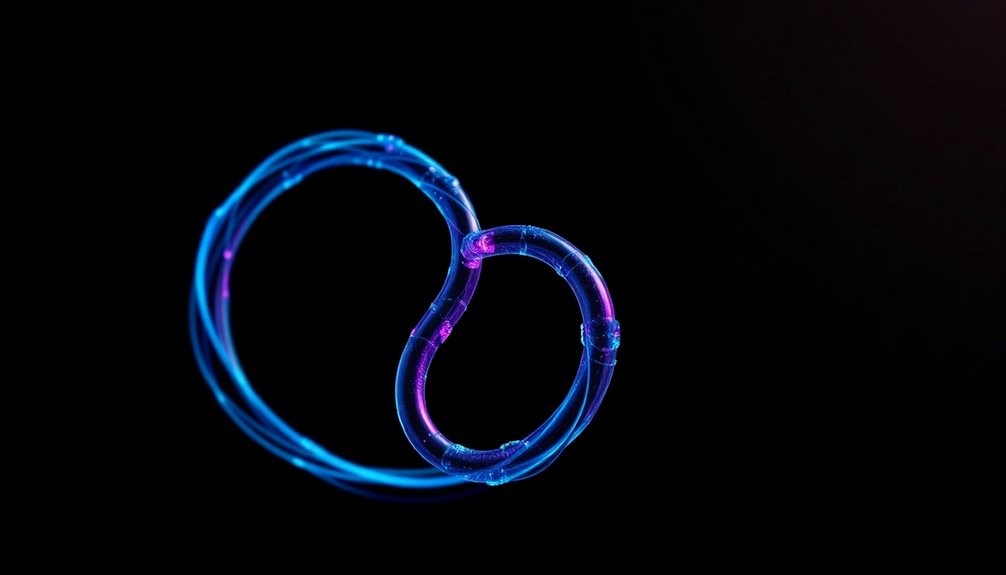
Computational studies have shed light on the electronic properties of the cyclopropenyl anion (1a), revealing its intriguing non-aromatic character despite possessing four π-electrons.
Kass's analysis using G3 and W1 methods indicates that this anion exhibits a fascinating stability profile, highlighted by:
- A low hydride affinity in the cyclopropenyl cation (1c)
- Linear relationships between deprotonation enthalpies and C=C-C angles
- Non-planar D3h symmetry that avoids antiaromaticity
- Structural adaptations like pyramidal geometry disrupting conjugation
These findings illustrate that the cyclopropenyl anion's reactivity and geometric features play significant roles in defining its electronic nature, prompting a reevaluation of its classification in the context of aromaticity.
Structural Geometry Considerations
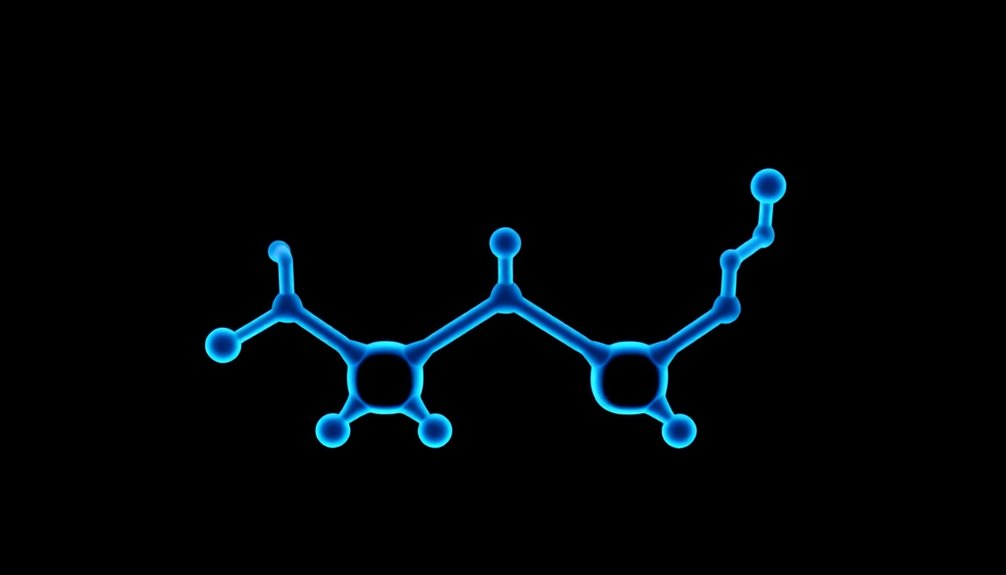
When you examine the cyclopropenyl anion, you'll notice its non-planar structure with D3h symmetry plays an essential role in its stability.
This deviation from a flat configuration reduces the typical antiaromatic character you'd expect from a 4n-electron system.
Understanding these geometric effects is key to grasping how they influence the anion's stability and overall behavior.
Non-planarity Effects
While many compounds with 4n electrons display planar structures to achieve full conjugation, the cyclopropenyl anion defies this expectation by exhibiting non-planarity with D3h symmetry. This geometric distortion reduces its antiaromatic character, as true antiaromatic compounds are typically planar.
You might visualize the cyclopropenyl anion's structure as:
- A pyramidal shape that disrupts conjugation
- Distorted angles reminiscent of cyclobutadiene
- A lone pair nestled in an sp3 hybrid orbital
- Adaptations that favor non-aromatic stability over antiaromatic instability
These structural adaptations reflect a preference for non-aromatic characteristics, showcasing how geometry plays a vital role in determining the electronic behavior of the cyclopropenyl anion.
Symmetry and Stability
Symmetry plays an essential role in determining the stability of the cyclopropenyl anion. With its D3h symmetry, this anion exhibits a non-planar geometry, which sets it apart from typical planar antiaromatic structures.
Unlike true antiaromatic compounds, which must remain planar, the cyclopropenyl anion adapts its structure to minimize antiaromatic character. The distortions in its geometry, akin to those in cyclobutadiene and cyclooctatraene, help reduce instability linked to antiaromatic systems.
This non-planarity disrupts conjugation, leading to a more stable non-aromatic state. Computational analyses further support this, showing that the pyramidal bonding geometry effectively breaks conjugation, enhancing stability over antiaromatic behavior.
Huckel's Rule and Its Implications
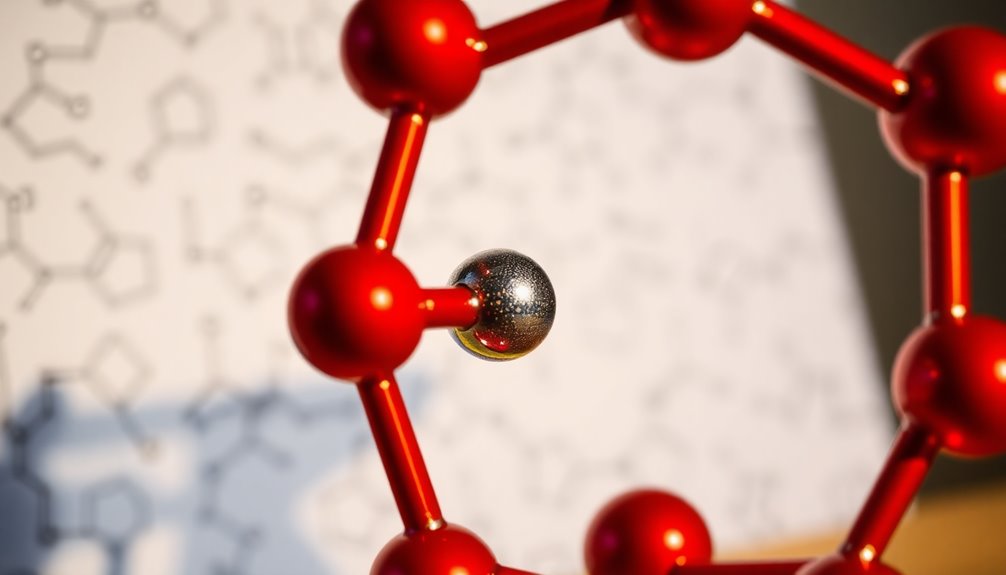
Huckel's Rule is a key principle that helps you determine if a compound is aromatic based on its π-electron count.
If a molecule has (4n + 2) π-electrons, it's likely to be stable and aromatic, while others, like the cyclopropenyl anion with only 4 π-electrons, fall into the non-aromatic category.
Understanding this rule is essential for predicting the stability and reactivity of cyclic compounds.
Huckel's Rule Explained
To determine whether a compound is aromatic, you need to take into account several key factors outlined by Huckel's Rule. This rule states that a compound must meet specific criteria to be classified as aromatic:
- It must be cyclic.
- It needs to be planar.
- It should be fully conjugated.
- It must possess 4n + 2 π-electrons, where n is a non-negative integer.
For instance, a compound with 6 π-electrons fits the rule perfectly.
In contrast, the cyclopropenyl anion has only 4 π-electrons, which places it in the 4n category, suggesting antiaromatic characteristics.
Understanding these criteria helps you predict the stability and behavior of cyclic compounds in organic chemistry, guiding your exploration of aromaticity.
Electron Count Significance
Understanding the significance of electron count is essential when evaluating a compound's aromaticity. Huckel's Rule states that a cyclic, planar compound with a fully conjugated system of p-orbitals is aromatic if it has 4n + 2 π-electrons.
In the case of the cyclopropenyl anion, it contains only 4 π-electrons, which means it doesn't meet Huckel's criteria. Instead, this anion is classified as antiaromatic, indicating potential instability and a lack of aromatic properties.
Compounds that don't satisfy Huckel's Rule often exhibit different chemical behaviors and reduced stability. By grasping these concepts, you can better predict how the cyclopropenyl anion and similar compounds will behave in organic chemistry, guiding your understanding of their reactivity and characteristics.
Non-Aromatic Compounds Characteristics
While many compounds exhibit aromatic properties, those that fail to meet Huckel's Rule are classified as non-aromatic, which greatly impacts their stability and reactivity.
Non-aromatic compounds, like the cyclopropenyl anion, don't have the cyclic, planar structure with 4n + 2 π-electrons required for aromaticity. Instead, they often display:
- 4 π-electrons, aligning with the 4n configuration
- Instability due to lack of aromatic stabilization
- Less favorable thermodynamic properties compared to aromatic compounds
- Different chemical reactivity, influencing reaction pathways
Understanding these characteristics is essential for predicting how these compounds behave in chemical reactions, as non-aromatic compounds react differently than their aromatic counterparts.
Related Concepts in Aromaticity
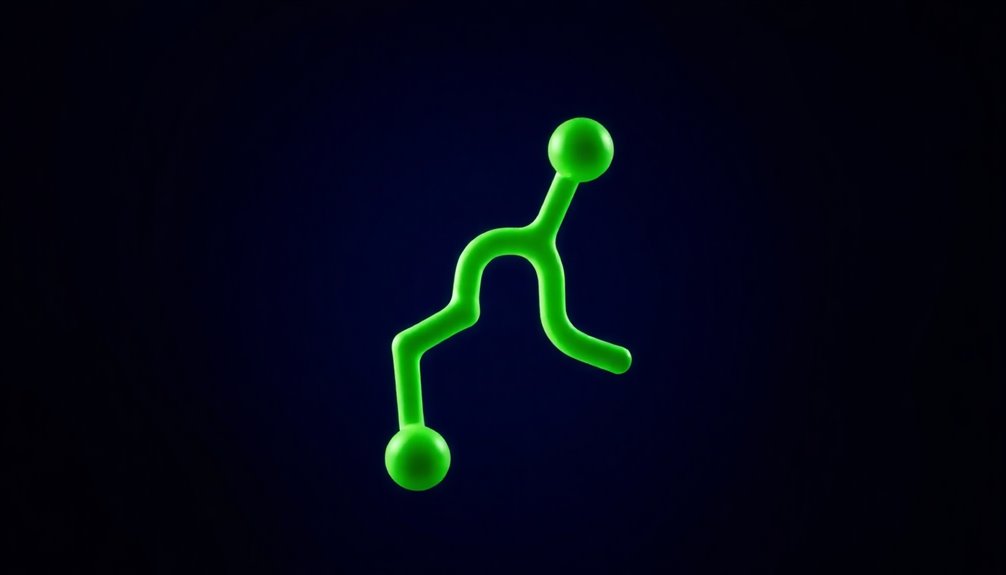
What makes the concept of aromaticity so intriguing is its intricate relationship with molecular structure and stability. Take the cyclopropenyl anion, for instance. Although it has four π-electrons, which would typically classify it as antiaromatic per Huckel's Rule, its stability tells a different story.
The anion's non-planar geometry and D3h symmetry deviate from ideal antiaromatic structures, which should be flat. You can see similar patterns in cyclobutadiene and cyclooctatetraene, where structural adaptations allow them to evade antiaromaticity.
Computational analyses reveal that the lone pair in an sp3 hybrid orbital disrupts conjugation, leading to a more stable non-aromatic state. This highlights how geometric distortions greatly influence the aromaticity of related cyclic compounds.
Expert Opinions and Insights
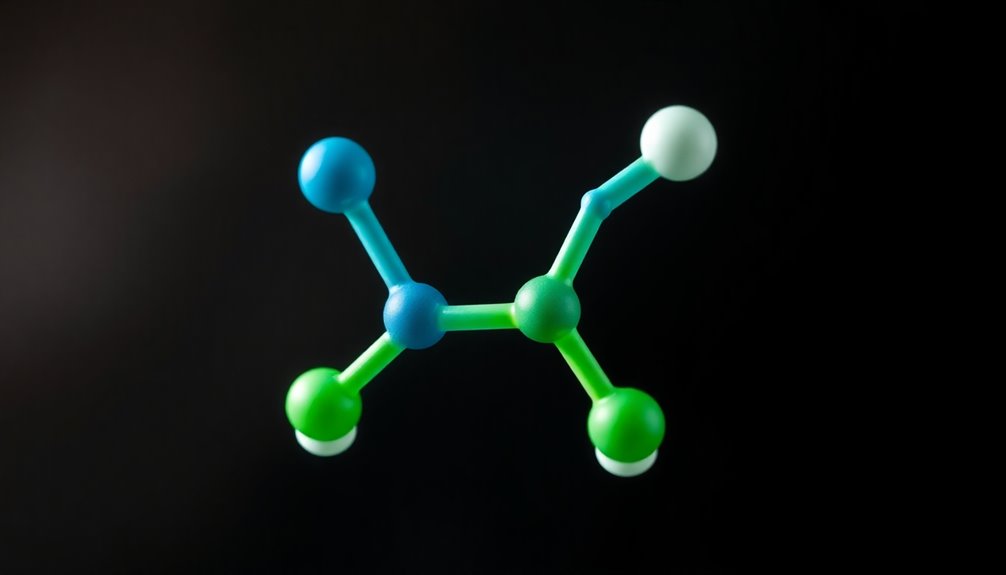
Experts in the field provide valuable insights into the cyclopropenyl anion's unique stability and its deviation from antiaromaticity.
Henry Rzepa highlights the Jahn-Teller effect, which introduces geometric distortions that enhance orbital flexibility.
Steven Bachrach echoes this sentiment, noting that these distortions effectively prevent antiaromatic behavior.
Consider these key points:
- Two degenerate orbital pairs contribute to structural flexibility.
- Geometric distortions are a common strategy in 4n-electron systems.
- Such adaptations reduce the instability typically linked to antiaromatic compounds.
- Computational analyses indicate a stable, non-aromatic configuration.
These insights reveal how the cyclopropenyl anion navigates the complexities of aromaticity, maintaining stability while sidestepping antiaromatic characteristics.
Frequently Asked Questions
Why Is Cyclopropenyl Anion Aromatic?
You might wonder why the cyclopropenyl anion is considered aromatic.
It has a unique non-planar geometry that minimizes antiaromatic character, allowing it to stabilize more effectively despite having four π-electrons.
The distortion in its shape reduces the likelihood of conjugation disruption, leading to a more stable state.
Is Cyclopentadiene Anion as Aromatic as Benzene?
When it comes to comparing cyclopentadiene anion and benzene, you're looking at two different beasts.
While cyclopentadiene anion is indeed aromatic, it doesn't quite match benzene's level of stability and aromatic character.
Benzene's perfect planarity and complete delocalization of six π-electrons give it an edge.
Is Cyclobutene Di-Anion Aromatic?
You'll find that cyclobutene di-anion isn't aromatic.
With 8 π-electrons, it fits the antiaromatic criterion of having 4n electrons, leading to instability.
Although its cyclic structure allows for p-orbital conjugation, the presence of these 4n electrons promotes antiaromatic characteristics.
Geometric distortions occur to reduce this destabilization, as seen in other antiaromatic systems.
Consequently, cyclobutene di-anion's properties greatly differ from those of aromatic compounds.
Is Cyclooctatetraene Anion Aromatic?
You might think cyclooctatetraene anion is aromatic because it has a cyclic structure, but it's actually classified as antiaromatic.
With 8 π-electrons, it follows Huckel's Rule for antiaromaticity. However, it adopts a non-planar, tub-like conformation to reduce instability.
This flexibility helps alleviate the strain typical of planar antiaromatic systems, resulting in a lower energy state and less reactivity compared to other antiaromatic compounds.
Conclusion
In the intricate dance of molecular structures, the cyclopropenyl anion pirouettes on the fine line between aromaticity and antiaromaticity. Its unique characteristics shimmer like a mirage, revealing a stability that's both tantalizing and elusive. By embracing Huckel's rule, you uncover the deeper symphony of electrons, harmonizing into a resonance that speaks of potential. As you explore computational studies, the structural geometry unfolds, painting a vivid picture of this enigmatic anion's true nature.

